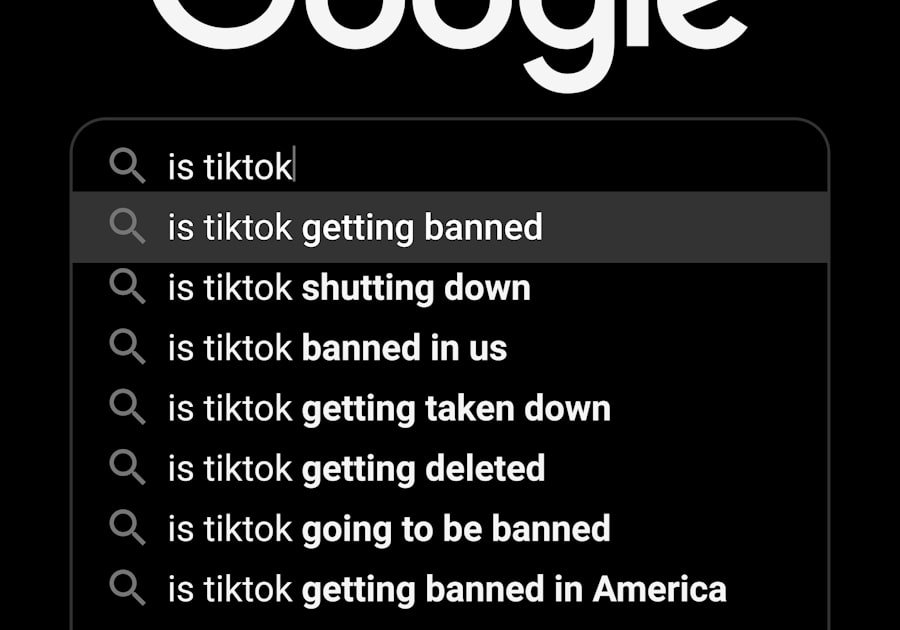Google Discover is a powerful tool that reshapes how users interact with content online. Unlike traditional search engines that rely on user queries, Google Discover curates a personalized feed of articles, videos, and other content based on users’ interests, search history, and engagement patterns. This means that for marketers, understanding Google Discover is not just an option; it’s a necessity.
The platform leverages machine learning algorithms to analyze user behavior, delivering content that aligns with individual preferences. The implications for brands are profound. With over 800 million users engaging with Google Discover monthly, the potential for visibility and engagement is immense.
However, the challenge lies in creating content that resonates with this audience. Unlike conventional SEO strategies focused on keywords and backlinks, Google Discover prioritizes high-quality, visually appealing content that captures attention quickly.
Key Takeaways
- Google Discover is a personalized content feed that provides users with relevant and timely information based on their interests and search history.
- Visual content such as high-quality images and videos can increase the chances of appearing in Google Discover and capturing users’ attention.
- Creating engaging and informative content that aligns with users’ interests and search behavior is crucial for appearing in Google Discover.
- Utilizing relevant keywords and staying updated with trending topics can improve the chances of content being featured in Google Discover.
- Implementing structured data can help Google understand and display content more effectively in Discover, increasing visibility and engagement.
Leveraging Visual Content for Google Discover
Visual content is the lifeblood of Google Discover. The platform thrives on eye-catching images and videos that draw users in and encourage them to engage. Research shows that articles with compelling visuals receive 94% more views than those without.
This statistic underscores the importance of investing in high-quality imagery and video content that not only complements your written material but also stands out in a crowded feed. To effectively leverage visual content, brands should prioritize originality and relevance. Stock images may suffice in some contexts, but unique visuals tailored to your brand narrative will resonate more deeply with your audience.
Consider using infographics, short videos, or even animated GIFs to convey complex information in an easily digestible format. Additionally, ensure that all visual content is optimized for mobile devices, as a significant portion of Google Discover users access the platform via smartphones.
Creating Engaging and Informative Content for Google Discover

Creating content for Google Discover goes beyond simply writing articles; it requires crafting engaging narratives that inform and inspire. The key is to focus on storytelling—content that connects with users on an emotional level while providing valuable insights. For instance, a brand in the health sector might share personal success stories alongside expert advice, creating a compelling narrative that encourages readers to engage further.
Moreover, the importance of relevance cannot be overstated. Content should not only be informative but also timely and aligned with current trends or events. Utilizing tools like Google Trends can help identify what topics are gaining traction, allowing brands to create content that meets the moment.
This approach not only enhances engagement but also positions your brand as a thought leader in your industry.
Utilizing Keywords and Trends for Google Discover Optimization
While Google Discover does not operate on traditional keyword-based search principles, understanding trending topics and relevant keywords can significantly enhance your visibility. By integrating these elements into your content strategy, you can align your offerings with what users are actively seeking. Tools like SEMrush or Ahrefs can provide insights into trending keywords within your niche, allowing you to tailor your content accordingly.
However, it’s essential to approach keyword integration organically. Overstuffing your content with keywords can lead to a poor user experience and may even harm your visibility on Google Discover. Instead, focus on creating high-quality content that naturally incorporates relevant keywords while maintaining readability.
This balance will not only improve your chances of appearing in Google Discover feeds but also enhance overall user engagement.
Implementing Structured Data for Google Discover
Structured data plays a crucial role in enhancing the visibility of your content on Google Discover. By implementing schema markup, you provide search engines with additional context about your content, making it easier for them to categorize and display it effectively. This can lead to improved click-through rates and increased visibility within the Discover feed.
For example, if you run a recipe blog, using structured data can help Google understand the ingredients, cooking time, and nutritional information associated with each recipe. This additional context can make your content more appealing in Google Discover, as users are more likely to engage with well-structured information that meets their needs quickly. Investing time in structured data implementation is a strategic move that can yield significant returns in terms of visibility and engagement.
The Importance of User Experience for Google Discover

User experience (UX) is paramount when it comes to Google Discover optimization. A seamless UX not only enhances user satisfaction but also encourages longer engagement times—an essential factor for success on the platform. Factors such as page load speed, mobile responsiveness, and intuitive navigation all contribute to a positive user experience.
To optimize UX for Google Discover, start by ensuring that your website is mobile-friendly. Given that most users access Google Discover via mobile devices, a responsive design is non-negotiable. Additionally, prioritize fast loading times; research indicates that 53% of mobile users abandon sites that take longer than three seconds to load.
By focusing on these elements, you create an environment where users are more likely to engage with your content rather than bounce away.
Analyzing Performance and Refining Strategies for Google Discover
Continuous analysis of performance metrics is essential for refining your strategies on Google Discover. Utilize tools like Google Analytics and Search Console to track how your content performs within the platform. Key metrics to monitor include click-through rates (CTR), average time spent on page, and user engagement levels.
Once you have gathered this data, use it to inform your future content strategies. For instance, if you notice that certain topics or formats consistently perform better than others, consider doubling down on those areas. Conversely, if specific pieces underperform, analyze why they didn’t resonate—was the headline unappealing?
Was the visual content lacking? By adopting a data-driven approach to content creation and optimization, you can continually enhance your presence on Google Discover.
Utilizing Google Discover for Brand Awareness and Engagement
Google Discover offers brands a unique opportunity to enhance awareness and foster engagement without relying solely on traditional advertising methods. By creating high-quality content that aligns with user interests, brands can organically reach new audiences who may not have been aware of their offerings previously. For example, a sustainable fashion brand could share articles about eco-friendly practices alongside visually stunning lookbooks featuring their latest collections.
This approach not only showcases their products but also positions them as thought leaders in sustainability—a narrative that resonates with their target audience. By leveraging Google Discover effectively, brands can cultivate a loyal following while simultaneously increasing their visibility in a competitive landscape.
Optimizing for Google Discover on Mobile Devices
Given that the majority of Google Discover users access the platform via mobile devices, optimizing for mobile is critical. Start by ensuring that your website is fully responsive; this means it should adapt seamlessly to different screen sizes without compromising functionality or aesthetics. Additionally, consider the mobile user experience when creating content.
Shorter paragraphs, bullet points, and engaging visuals can enhance readability on smaller screens. Furthermore, prioritize fast loading times; mobile users expect instant access to information, and delays can lead to frustration and abandonment. By focusing on mobile optimization, you position your brand to capture the attention of users scrolling through their feeds.
Leveraging Social Media for Google Discover Visibility
Social media platforms serve as powerful allies in enhancing visibility on Google Discover. By sharing your content across social channels like Instagram, Twitter, and Facebook, you can drive traffic back to your website while simultaneously increasing the likelihood of appearing in Google Discover feeds. Engagement on social media can signal to Google that your content is valuable and relevant—factors that contribute to its visibility within Discover.
Encourage sharing by creating shareable graphics or snippets from your articles that resonate with your audience. Additionally, consider collaborating with influencers or industry leaders who can amplify your reach and introduce your brand to new audiences.
Staying Updated with Google Discover Algorithm Changes and Updates
The digital landscape is ever-evolving, and staying updated with changes to the Google Discover algorithm is crucial for maintaining visibility and engagement. Regularly check industry news sources or follow Google’s official blogs to stay informed about updates that may impact how content is displayed within the platform. Being proactive about algorithm changes allows you to adapt your strategies accordingly—whether it’s adjusting your content creation process or refining your optimization techniques.
By remaining agile and responsive to these changes, you position your brand for sustained success within the dynamic environment of Google Discover. In summary, mastering Google Discover requires a multifaceted approach focused on high-quality visual content, engaging narratives, strategic keyword usage, structured data implementation, and an unwavering commitment to user experience. By continuously analyzing performance metrics and adapting strategies based on real-time data while leveraging social media for increased visibility, brands can harness the full potential of this powerful platform.
As we look ahead, staying informed about algorithm changes will be key to maintaining relevance in an ever-evolving digital landscape—ensuring that your brand remains at the forefront of consumer engagement in the age of personalized content delivery.
In the ever-evolving landscape of digital marketing, optimizing for Google Discover has emerged as a crucial strategy for driving traffic.
An insightful article that complements this topic is SME Operational Efficiency 2024: Technology, which explores how technological advancements can streamline operations and improve productivity. By integrating these strategies, businesses can not only optimize for Google Discover but also ensure that their operations are running smoothly, ultimately leading to sustained growth and success.
FAQs
What is Google Discover?
Google Discover is a personalized content feed that displays articles, videos, and other content based on a user’s interests and search history. It is available on the Google app and mobile browsers.
How does Google Discover work?
Google Discover uses a mix of algorithms and user data to curate content that is relevant and interesting to individual users. It takes into account a user’s search history, location, and interactions with Google products to provide personalized recommendations.
How can I optimize my content for Google Discover?
To optimize for Google Discover, focus on creating high-quality, engaging content that is relevant to your target audience. Use high-resolution images, clear headlines, and descriptive summaries to make your content more visually appealing and informative.
What type of content performs well on Google Discover?
Content that performs well on Google Discover includes news articles, evergreen content, how-to guides, and videos. It’s important to create content that is visually appealing, informative, and relevant to a wide audience.
Can I track the performance of my content on Google Discover?
Yes, you can track the performance of your content on Google Discover using tools like Google Analytics and Google Search Console. These tools provide insights into the traffic and engagement metrics for your content.



